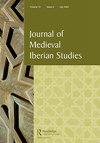949年卡斯蒂利亚野火的原因和社会经济影响
IF 0.4
2区 历史学
0 MEDIEVAL & RENAISSANCE STUDIES
引用次数: 0
摘要
根据中世纪的记载,1949年6月1日,一场毁灭性的野火席卷了梅塞塔北部,在卡斯蒂利亚东北部的Bureba地区尤为严重。本研究探讨了火灾的可能原因,特别强调人为因素。在更现代和更有记录的火灾中,人类对林地管理不善,导致火灾前几年灾难性的燃料积累,一直被认为是一个重要的促成因素。在这里,我认为,直到10世纪早期,在穿过布里维塞斯卡的罗马道路两侧暴露的低地地区,对穆斯林的入侵是脆弱的,相对来说,这些地区还没有得到充分的开发。此后,它们将开始被充分利用,导致一段时期对谷底的不受控制的森林砍伐,这种动态导致了随后的949年大火的严重程度。本文章由计算机程序翻译,如有差异,请以英文原文为准。
Causes and socio-economic implications of the Castilian wildfire of 949
ABSTRACT According to medieval records, on 1 June 949 a devastating wildfire swept across the northern Meseta, with notable intensity in the Bureba region of northeastern Castile. This study examines the possible causes of the conflagration with special emphasis on anthropogenic factors. In more modern and better documented conflagrations, human mismanagement of woodland, leading to a disastrous build up of fuel in the years before the fire, is consistently observed as a significant contributing factor. Here I argue that the exposed lowland areas flanking the Roman road that passes through Briviesca, which were vulnerable to Muslim incursions, would have been relatively under-exploited until the early tenth century. Thereafter they would have started to be fully exploited, leading to a period of uncontrolled deforestation of the valley floor, a dynamic that then contributed to the severity of the ensuing fire of 949.
求助全文
通过发布文献求助,成功后即可免费获取论文全文。
去求助
来源期刊

Journal of Medieval Iberian Studies
MEDIEVAL & RENAISSANCE STUDIES-
CiteScore
1.20
自引率
20.00%
发文量
24
 求助内容:
求助内容: 应助结果提醒方式:
应助结果提醒方式:


